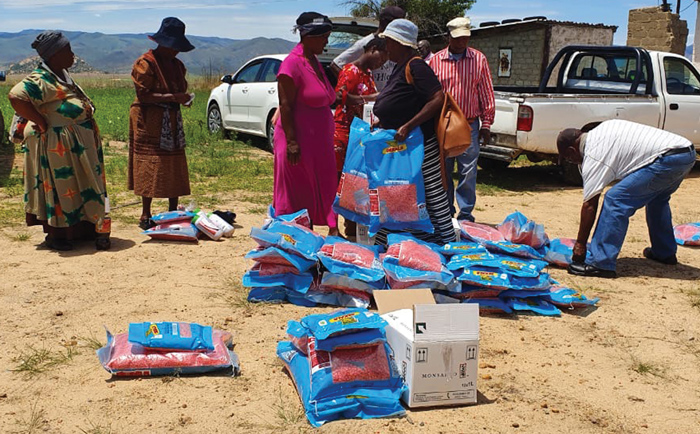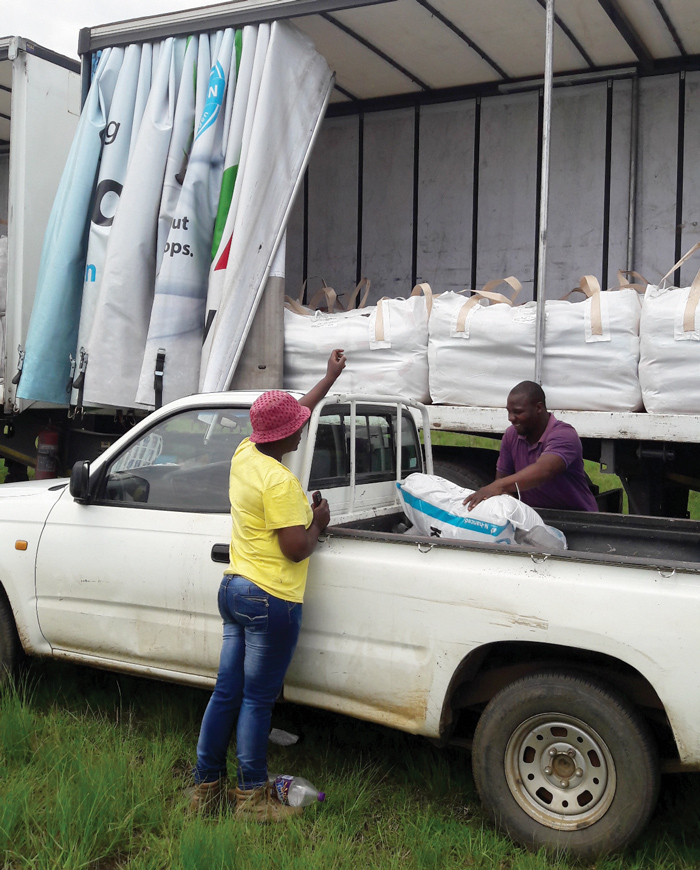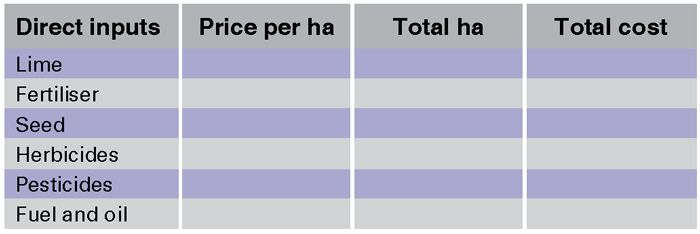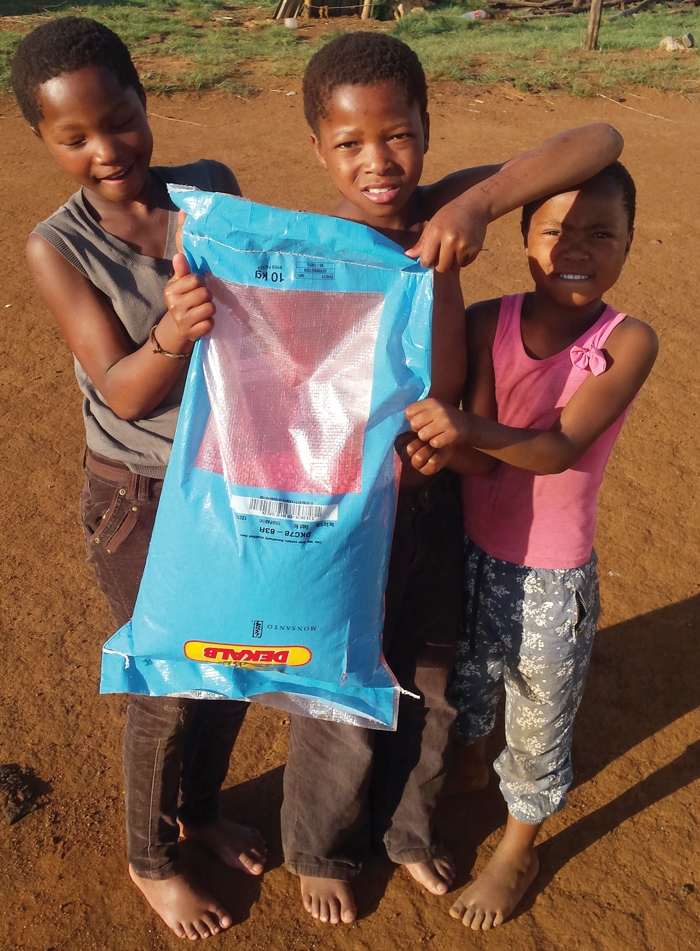August 2021
| JENNY MATHEWS, MANAGEMENT AND DEVELOPMENT SPECIALIST AND EDUCATOR |
 |
Every farmer needs to carefully calculate what the season’s inputs are, so you can ultimately compare your expenses to the ‘return’ on the crop and analyse whether the exercise was worthwhile and profitable in some way – whether it is in money in the bank or food in the storehouse.
Often farmers just go from one season to the next doing their best with what they know without carefully measuring their costs to find out if all the effort has been fruitful, or to find out if there is something that could have been done more efficiently to save costs.
Every farmer has his own unique set of circumstances and must look at the big picture to count the expenses that are incurred in running the different farming projects. Each different farming activity must be counted and then assessed as an overall farming operation.

The Barberton farmers take delivery of their seed.
BUDGET PLANNING
Budgets are simply a formal means of organising relevant economic information to help you make business decisions. Enterprise budgets that list receipts of goods bought, costs and net returns for a single product are a fundamental planning and analysis tool that every business needs.
They say, ‘To measure is to know’. Maize production costs and returns per hectare planted must be measured. Every farming operation can be costed by analysing variable and fixed costs.
Fixed costs are expenses that stay the same regardless of what you produce. Examples include all land and other rental lease payments, buildings, permanent worker salaries, insurances, property taxes, interest expenses if you have active higher purchase agreements or loans, depreciation – because every vehicle you own will be valued less each year – repairs and maintenance and potentially some utilities like electricity and water.
Annual operating inputs are relatively straightforward. They are ‘annual’ inputs because unlike buying a tractor or a planter which lasts many years, these are all used up every year and must be bought again for a new season. For the grain producer these include costs like lime, fertiliser, herbicides and pesticides, seed, irrigation water, labour, fuel and even cost of contracting machinery, implements and repair and maintenance budgeting. The cost of these fluctuates depending on market prices from one season to the next. These inputs can be changed during the production process to bring about changes in output.

Budget supporting information
The budget planning must also include potential yield and income results that you expect to achieve according to past seasons averages.
Practise drawing up a budget
Start at the beginning and draw up a potential budget for direct inputs based on one hectare. It could typically look something like this:
 Other questions the farmer needs to ask and record for accurate budget planning:
Other questions the farmer needs to ask and record for accurate budget planning:

Even the children appreciate the gift.
These are just a few questions to ensure that the accurate information is collected. A budget plan begins with the planning for the new season. Remember it is critically important to accurately measure each cost along the way and keep the receipts and records of every cent you spend on producing the crop. It is important to know if you are growing your business. Accurate information empowers us to make better decisions for the future.
Publication: August 2021
Section: Pula/Imvula